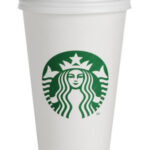COMMENTARY | Media frenzy has broken since Starbucks confirmed on March 26 what many suspected about its Strawberry Frappuccino. What makes this product, and hundreds of other common food items red, is beetlejuice. Well, close enough. Natural red food coloring is most commonly derived from grinding and boiling up the exoskeleton of Cochineal beetles that are found mostly in Mexico and South America. In the food industry, cochineal coloring is referred to by more palatable names, mostly “carmine” and “crimson lake.
Foods containing this natural food coloring cause an allergic reaction in some people. It is not suitable for vegetarians, vegans or those following kosher or halal diets. Back in 1998, The Center for Science in Public Interest, a consumer advocacy group, urged the United States Federal Food and Drug Admistration to improve labeling of or ban cochineal food. After a decade, in January 2009, FDA passed a new regulation requiring carmine and cochineal to be listed by name on the label for all food and cosmetic products in the statement of ingredients.
Starbucks’ bug-infused Strawberry Frappuccino should not come as a surprise. Most red or pink foods such as yogurts, fruit juices, smoothies, candy or cake contain carmine or cochineal, meaning bug scales.
My former career involved working closely with processed food companies, so I have been following this topic closely. In my experience, food manufacturers like General Mills and Kellogg are generally unapologetic about using carmine, since cochineal dye has been used as a coloring agent since the 15th century and considered safe. Since beetle juice is cheaper than substitutes such as beet juice, and considered better than artificial red dyes since it is “naturally” derived, food and cosmetic companies use it widely.
Shortly after the FDA ruling was passed, all food manufacturers started disclosing carmine or cochineal in their list of ingredients. Since then, carmine has been the subject of documentaries on Science and Discovery channels. However, it bugs me that consumers are surprised when they read about beetle extract in their food products, such as Starbucks’ Strawberry Frappuccino, clearly unaware they have been feeding the same to their kids for years. Clearly carmine or cochineal does not scream “extract from insect scale,” which would make any food unappetizing. However, I am thankful ABC News, CBS News and others are bringing this weird ingredient onto the consumer’s radar.
I refuse to consume or pay for foods laced with bug scales, and most people I know refuse as well when they find out the true behind natural red food coloring found in almost all red, pink or purple food products. I have seen carmine listed in Yoplait, Trix and Dannon Strawberry yogurts and smoothies, packaged red velvet cake, ice creams, Ocean Spray ruby red grapefruit juice, and several colorful kids cereals that claim they are naturally colored. Of course, there are several products where carmine or cochineal is not listed, such as those that are not packaged. For example, almost all red velvet cakes that are naturally colored contain bug extract.
My refusal stems from the risk of potential allergies, and also from an aversion to eating bugs. I will not eat beetles simply because it is better for corporate margins. There are alternatives. For example, Stonyfield’s strawberry yogurt, which typically costs $1.89 for 4 oz. compared to $0.99 for Yoplait, is colored with beet juice. Sure, the color is not as vivid, and the price is a premium, but it is something I am willing to pay for to avoid eating insect extract.





